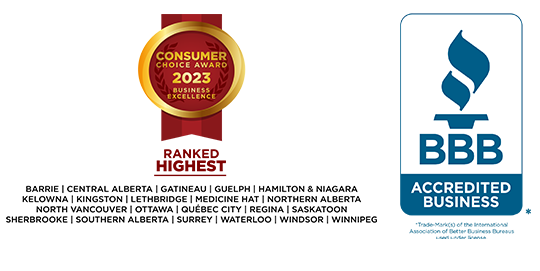Don’t be an ostrich: How to face your tax debt once and for all
I have a unique perspective on income tax debt among my peers, owing largely to my six years at the Canada Revenue Agency (CRA) prior to becoming a Licensed Insolvency Trustee (LIT). The experience has helped me understand common strategies and behaviors which tend to work against taxpayers’ long-term interests — especially in their interactions with the CRA collections group.

In the years since, I’ve seen many people overburdened with tax debt. They’re often worried, desperate, and under the impression relief simply isn’t available for government debts.
Most are surprised (and delighted) to discover that a Bankruptcy or Consumer Proposal is an effective option to deal with most tax debts. The government is a creditor like any other in the eyes of the Bankruptcy and Insolvency Act (BIA).
However, such formal proceedings should be considered a last-resort and are usually unnecessary if you can avoid certain ‘taxing’ choices along the way.
If you’re making money, you owe tax!
Most people who work for a single employer will have tax deducted from their pay cheques in line with their anticipated total annual income. They should, in theory, break even when they file their tax return (i.e. no tax owing and no refund).
Multiple jobs
Things get slightly more complicated if you have more than one job.
Each employer will deduct tax based on your anticipated income from their business. However, it’s often the case that your overall annual tax payable will be more than the sum of what each employer projected (and therefore deducted). You may end up owing additional tax to the CRA.
The best way to avoid this unhappy result is to request at least one of your employers (or pensions, if applicable) deduct additional tax to compensate.
Self employed
This can be an even bigger challenge for self-employed people as tax is not deducted and withheld automatically; that responsibility falls on the business owner or bookkeeper. Failing to set aside the right amount of tax every month can result in a shocking bill to the CRA come April.
It can be particularly time consuming to
figure out your net (after expenses) income every month or quarter and
calculate the tax accordingly. However,
if your business expenses stay roughly the same in proportion to your income
each year, you may be able to make use of a bit of accounting shorthand.
While not a perfect formula, the following is a helpful guide to estimate your tax owing (including mandatory Canada Pension Plan Contributions):
1. Calculate how much tax (including CPP) you paid last year as a percentage of your gross (before expenses) income (Tax Payable / Gross Income x 100).
2. Every time you pay yourself, multiply your income by the percentage you calculated above (e.g. $3,500 x 25 percent = $875).
3. Set that percentage aside from your self-employed income in a separate bank account that you only use for tax purposes.
If CRA requires you to make quarterly installment payments, be sure to send your payments on time and in full to avoid (often significant) interest charges. Consider sending more frequent installment payments when and where you can to avoid accidentally spending what you’ve already set aside.
Also, don’t forget to remit GST/PST/HST as
well. These amounts belong to the
government as soon as they are collected, and CRA takes a particularly dim view
if someone diverts these funds for their own use.
Don’t be an ostrich
There’s no evidence ostriches actually bury their heads in the sand to avoid danger, but let’s not let the truth get in the way of a good metaphor. There are three common ways people avoid their tax debt:
1. Procrastination — Gathering tax information, bookkeeping, and preparing tax returns is tedious and time consuming. But putting it off can cost you. Late-filing penalties are significant and get worse the more and more often you put it off.
2. No return, no debt — Maybe the problem isn’t preparing the tax return but facing the balance owing. Some people reason what the CRA doesn’t know can’t hurt them and deliberately avoid filing their return. But you can only avoid your taxes for so long before CRA files them for you.
A CRA prepared return generally involves a fair bit of guesstimating, doesn’t factor in deductions you might have claimed, and will generally result in you owing more tax. To make matters worse, it includes all the same fees, interest, and penalties as above — and CRA still expects you to file the actual return.
3. Avoiding payment — Getting the return is filed and assessed is great, but the debt still needs to be paid — or, at the very least, arrangements put in place to begin paying against it. Unlike other creditors, CRA does not have to sue you in court to garnishee your income sources, bank accounts, or investments. CRA will not tolerate being ignored for long before they resort to these and other actions like registering liens against your house or other property.
If all else fails…
Life happens. We’re all vulnerable to unexpected expenses, revenue shortfalls, or just plain old forgetfulness. Despite their best intentions and planning, some people simply end up spending money they’d earmarked for taxes and end up falling short when the time comes to pay. Regrettable? Certainly. But it’s not the end of the world.
Communication is everything
Reach out to CRA immediately to demonstrate you’re aware of the situation and being proactive about it. This can often prevent arbitrary legal action and result in an affordable payment arrangement.
Sometimes CRA will want proof the payment arrangement you’re offering is the best you can manage. Or, that you’re willing to address your future tax debt through additional tax deductions, installment payments, etc. Be ready to respond to their concerns and supply this information in a timely fashion. CRA may also be willing to waive penalties and/or interest if you have a good reason for being late with your tax return or paying the balance.
However, if you cannot reach an agreement — or the tax debt is simply too large to pay in any reasonable timeframe — it may be time to consult with a Licensed Insolvency Trustee. During a Free Confidential Consultation, we’ll review your options, let you know the risks and benefits of each, and help you find the best-fit solution to your tax debt problems.
There’s always a solution, and the sooner we can find it, the sooner this stress will be out of your life for good. So don’t be an ostrich, let’s face your tax debt together.

